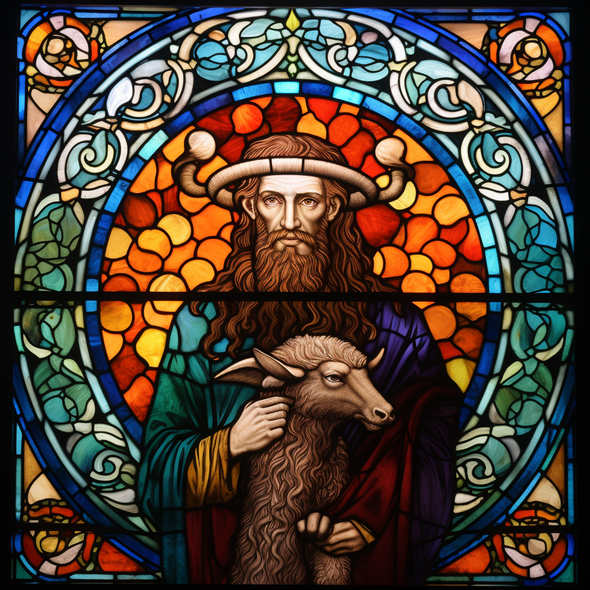|
One of the remarkable things about Scripture is what I call the Consistency of Metaphor. Writers, commentors and theologians for thousands of years have commented on the consistency of the biblical text and while that is what I'm referencing here, the thought is more specific. I'm taking "metaphor" in the literary sense, which is a statement of comparison between two dissimilar things to bring depth to an idea or description. This is one of the things that makes language beautiful, and that we can easily understand this is an incredible and noteworthy facet of language itself. Let's take a page from the Bard... All that glistens is not gold; Often have you heard that told: Many a man his life hath sold But my outside to behold: Gilded tombs do worms enfold. Had you been as wise as bold, Young in limbs, in judgment old, Your answer had not been inscroll’d: Fare you well; your suit is cold. ~The Merchant of Venice, Act II, William Shakespeare In context, this is a test related to the eligibility of Portia for marriage from The Merchant of Venice. The idea is that while Portia is outwardly beautiful, her true and lasting beauty is internal and not merely flesh deep as it were. The complicated idea Shakes is strikingly communicating is that a shallow appreciation and perception of beauty is like the ornate decoration of tomb. Pretty on the outside, decaying and worm-ridden on the inside. In a handful of lines and with the comparison of people to tombs, Shakespeare elegantly leads us to the idea that the love of money is ultimately consuming, while the apprehension of virtue and character is of undiminishing value. This is the power of metaphor. The image expressed well can communicate directly, while still maintaining a nuance that brings immediacy to understanding even a difficult and multi-facted idea. So with biblical metaphor. The pictures we receive from inspired text can open our minds and hearts to truth that is harder to get to by more direct means. The pictures, while necessarily incomplete, help us form a better connection with the ideas of virtue and God than we can get to through our own direct experience alone. This way of speaking can effectively lead us from the known to the unknown. So, in the words of a favorite professor, "I never metaphor I didn't like." Truly. Here's the amazing thing: the Bible is stunning in it's Consistency of Metaphor. Let me give you an example... www.biblegateway.com/quicksearch/?quicksearch=shepherd&version=ESV This is every mention of the word "shepherd" in the Bible. Check it out and skim the results. Two things here: first, sometimes a shepherd is a reference to the actual occupation of shepherd and sheep husbandry. Second, you'll quickly see that the idea of God as "Shepherd" has a lot of touches from the Torah, the Prophets, the Psalms and the Gospels, along with the letters to the early churches in the New Testament. From there, you'll see numerous references to the idea of spiritual and political leadership as shepherding, with good shepherds being terrific, and the lack of a shepherd being very bad. It's not that the picture of shepherd always means the same thing. It's way more complicated and interesting than that. It's that the metaphors will strongly tend towards a cluster of ideas that point in a singular and helpful direction. And this works for any metaphor you care to look at. Bears, birds, trees, honey, water, fire, you name it - if you look at the pull of all the biblical references you'll find a wonderful consistency and direction to the figurative nature of the language. Try if for yourself at biblegateway.com or any concordance of your choice! Pick a word, or phrase, or picture and look up every reference in scripture, read through them and ask the question, what do these things have in common? To be fair, a part of this is the nature of language itself, and when a helpful metaphor emerges it tends to enter language and is repeated over time to communicate the idea it hits upon. Yet what I'm seeing here goes far beyond that simple durability of language. I am amazed at how beautifully this expresses, and expresses continually throughout the biblical text. Again, this is my opinion, but one that I'm very confident in: no one is smart enough to do this at this level. Even more incredible, is that this consistency is present, across multiple languages and generations, with over 40 different authors. Pastor Christoph Römhild and researcher Chris Harrison, tracked this idea through a series of data pulls and graphical representations. A famous one is shown below - this is the direct connections of the bible referencing itself (i.e., one book quoting or referring to another book in the Bible). This happens specifically close to 65,000 times. It is the world's greatest self referencing hyperlinked text. With the multiplicity of the human part of authorship, this pattern of facts and Consistency of Metaphor lead me to believe that the Holy Spirit did in fact inspire the Bible, that it is in fact, God breathed... And it's one of many reasons why I believe that the Bible is the real thing.
0 Comments
Leave a Reply. |
Our Writers:At The Surge we love doing things together... that includes writing a blog! Here are a few of our main contributing authors: Greg JohnsonJesus++ Dwaine DarrahOur fearless leader, Dwaine is the lead pastor at The Surge. His experience in counter terrorism with the CIA prepared him for ministry and he likes dogs and babies even more than E does. EE (short for Eric Reiss) is the Wingman at The Surge and likes dogs, music, Mexican food, his wife Karen and his little girl Evangeline... not necessarily in that order. Archives
June 2024
Categories
All
|
|
|
The Surge Community Church
Meeting Sunday Mornings at The State Theatre in Falls Church, 11:10am! Rebroadcast Available Sunday Evenings with SurgeOnDemand, 7:00pm! |



 RSS Feed
RSS Feed
